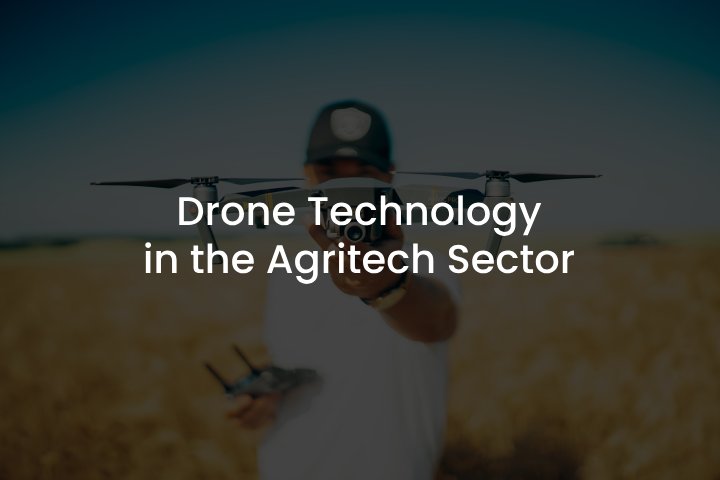
How Drone Technology is Tackling Farm Labor Shortages
Labor shortages in the agriculture sector have long presented major issues for food output and sustainability. This problem results from a confluence of elements including an aging workforce, limited immigration laws, and a diminishing rural population. Without enough workers, crops may go unharvested, causing major losses and maybe food shortages. Furthermore, difficult labor-intensive chores like harvesting, weeding, and planting start to reduce profitability and output.
Maintaining a dependable and sustainable food supply depends on addressing the shortfall in agricultural labor. While addressing the fundamental social and economic causes of this problem, creative ideas are required to close the labor demand-to-supply imbalance. Advanced technologies such as drone technology have great potential to help reduce labor shortages’ effects and open the path for a more resilient and efficient agriculture industry.
The Rise of Drone Technology in Agriculture
The development of drone technology has fundamentally changed the agriculture business. These unmanned aerial vehicles (UAVs) provide a variety of features that solve many problems like manpower shortages that farmers encounter. Advanced sensors and cameras on drones let them precisely evaluate water stress levels, track crop health, and spot insect infestations. Employing this real-time data collecting and analysis, farmers may maximize yields using educated judgments and prompt actions, therefore optimizing resources.
Furthermore, precise and effective pesticide, fertilizer, and other agricultural input spraying may be accomplished using drones. Along with reducing waste, this focused application lessens the environmental effect of conventional spread spraying techniques. By covering vast regions in a fraction of the time needed by manual work, drones greatly increase production and lower the need for human involvement in dangerous or labor-intensive jobs.
Drone Applications for Tackling Labor Shortages
Crop scouting is one of the most common uses of drones in agriculture, where they are used to monitor fields for insect infestations, disease outbreaks, nutrient deficits, and other possible hazards. Traditionally, this duty required farmers or scouts to trek across fields, which was time-consuming and labor-intensive. Farmers can rapidly and effectively inspect vast regions, spotting issue areas and acting fast when drones fitted with high-end cameras and multispectral sensors fly over them.
Another important use of drones is precision spraying, which includes the targeted delivery of insecticides, herbicides, and fertilizers. Often resulting in the abuse of chemicals, conventional spraying techniques cause environmental degradation and higher expenditures. By carefully mapping fields and spraying only the areas that need treatment, drones help to minimize waste and lower the total chemical impact.
Additionally, becoming very useful for crop monitoring and forecasts are drones. Drones can provide comprehensive information on crop health, development trends, and possible yield by gathering high-resolution images throughout the growing season. Regarding marketing plans, harvest scheduling, and resource allocation, this information may let farmers decide with knowledge.
Cost and Efficiency Improvements
For many different agricultural activities, drone technology provides significant cost reductions and efficiency increases over conventional hand labor or machines. Drones may significantly cut labor expenses by automating tasks such as data collecting, spraying, and agricultural monitoring, hence increasing output and yield.
Moreover, very precise and fast data on crop health, soil conditions, and possible problems given by drones fitted with sophisticated sensors and imaging capabilities will help farmers make wise judgments and implement preventative action. Utilizing more effective use of resources like water, fertilizers, and pesticides resulting from this precision agricultural strategy, costs are saved, and environmental impact is lowered.
Future Outlook and Potential Challenges
With ongoing developments in drone capabilities, sensor technologies, and data processing, drone technology in agriculture seems to have a bright future. Still, some possible difficulties must be resolved.
Integration of drones with other precision agricultural technologies like autonomous farming equipment, precise planting, and variable rate application presents one of the main prospects. Combining data from many sources helps farmers to have a complete awareness of their fields and make wise choices, therefore promoting efficiency, sustainability, and profitability.
Moreover, a future rise in the incorporation of drones in approaches to environmentally friendly growth. Drones may be used to monitor soil health, identify pests and illnesses early, and optimize the use of resources like water, fertilizers, and pesticides. Preserving or increasing yields may assist in lessening the environmental effect of agricultural activities.
Still, some possible difficulties must be resolved. Drone operations in agriculture are still developing their regulatory systems, so privacy, security, and safety issues might be raised. Furthermore, hampered by elements like cost, training requirements, and certain farmers’ opposition to change might be the acceptance of drone technology.
Managing and analyzing the enormous volumes of data produced by drones and other precision agricultural devices is even another difficulty. Farmers will need strong data management, analysis, and decision-support systems if they are to properly use these technologies.
Notwithstanding these difficulties, drone technology in agriculture has bright prospects and is predicted to become even more significant in tackling labor shortages, enhancing efficiency, and advancing environmentally friendly agricultural methods.
Conclusion
Emerging as a game-changer in tackling agricultural labor shortages, drone technology presents a viable answer to one of the most urgent problems confronting the sector. Drone automation of different jobs can transform agricultural operations, increase efficiency, lower prices, and guarantee food security for an increasing global population.
For farmers, the adaptability of drones in uses such as data collecting, precise spraying, and crop monitoring has already clearly shown advantages. Drones will become progressively more sophisticated as the technology develops, able to complete ever more difficult jobs and smoothly interact with other precision agricultural equipment.
In order to guarantee a consistent and plentiful food supply for the next generations, the integration of drone technology into contemporary farming methods marks ultimately a key first step toward a more sustainable and efficient agricultural system.


